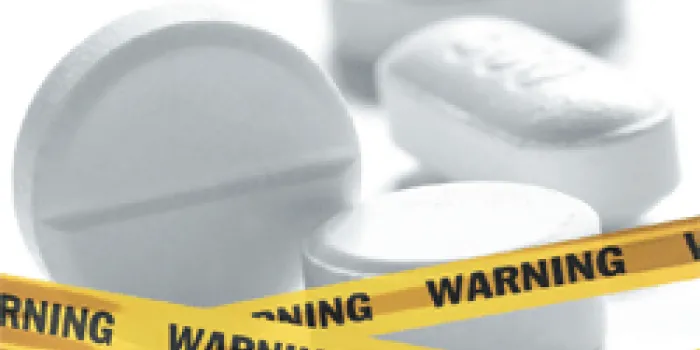Acetaminophen is a time-tested pain reliever that many people reach for when headaches or muscle and joint pain become unbearable. But in August 2013, the US Food and Drug Administration (FDA) issued a warning about potentially serious skin rashes associated with acetaminophen use.
Pain relievers in a class of drugs called nonsteroidal anti-inflammatories (NSAIDs), such as ibuprofen and naproxen, have carried skin rash warning labels for years. Acetaminophen, which is not an NSAID, is the latest pain reliever to require such a warning. It is a common ingredient in over-the-counter cough and cold products, allergy medications and sleeping aids, and also in prescription opioids. Even if patients have taken acetaminophen for years without a complication, skin rashes can occur suddenly.
Over more than 40 years, from 1969 to 2012, the FDA’s Adverse Event Reporting System documented 107 cases of severe skin rash after patients used acetaminophen-containing products. Of the confirmed cases, 67 people were hospitalized and 12 died.
Types of rashes
The three skin disorders cited by the FDA that can result from hypersensitivity to acetaminophen are: acute generalized exanthematous pustulosis, Stevens-Johnson syndrome (SJS) and its severe form called toxic epidermal necrolysis (TEN).
Acute generalized exanthematous pustulosis occurs a few days after taking acetaminophen. Patients typically develop a fever on the same day that pustules, pus-filled blisters, appear on the face and upper trunk and in body folds. Once acetaminophen is discontinued, the rash disappears on its own.
SJS and TEN are rare skin conditions that can be life-threatening. They are characterized by painful blisters on the skin and in the mucous membranes of the eyes, mouth, nose and genitals. One to three weeks after using a product with acetaminophen, patients may experience flulike symptoms, such as fever, sore throat and fatigue. A few days later, the rash and blisters appear. The blisters can make the skin look scalded. Once the blisters rupture, they can leave large areas of the skin denuded, as the skin is sloughed off in sheets, detaching from the underlying dermis. Without the skin’s barrier, the body is susceptible to secondary bacterial infections. Complications include blindness, organ damage, meningitis and pneumonia. Permanent damage, such as scarring and pigmentation changes of the skin, along with hair loss and abnormal nail growth can result. The greater the area of skin that detaches, the higher the mortality.
Treatment
Treatment for these severe skin reactions typically entails hospitalization to replace lost fluids and provide necessary wound care. Patients are usually treated in a burn ward. Pain medications, antihistamines, antibiotics and topical steroids may be prescribed. If the skin damage is extensive, skin grafts may be needed.
At-risk patients
Although SJS and TEN can occur in people of all ages, they are more common in older adults. People with existing viral infections, such as HIV and hepatitis, are at a higher risk of developing SJS and TEN after taking acetaminophen, as are those with lupus. Researchers have identified certain genetic mutations that predispose some individuals to these skin disorders. However, it is still hard to predict which patients will have a severe reaction.
If you’ve experienced a skin reaction to acetaminophen or a combination product containing it, meet with your healthcare provider to discuss pain relief alternatives.

